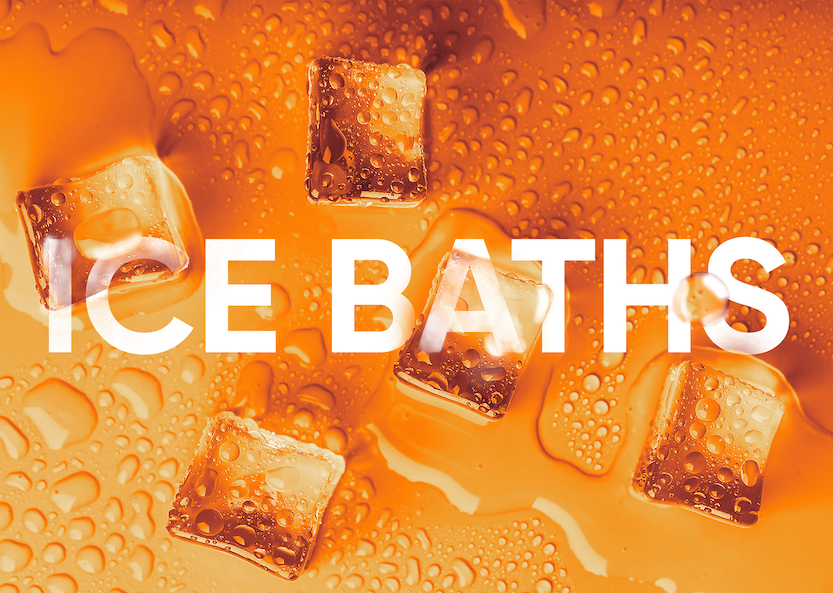Blog

Cold Water Therapy
Cold water therapy (ice baths) has become a common practice amongst many Hamilton athletes across all squads. Plunging into a bucket of ice-cold water at centres such as Longevity or Warehouse Gym Jumeirah Park is an insta-worthy video of the courage it takes to dunk beneath the water. So why do athletes participate in such a practice and what are the pros and cons of doing so?
The research behind cold water therapy (a form of cryotherapy) is vast and is by no means a new practice, with health benefits related to both sports and the general population. For centuries, cold water immersion has been a tool to aid many health-related concerns and ailments (blood pressure, fever, etc). As with many health-related tools, the transition into exercise recovery has a more modern history, and progress made into accessible methods of submersion has allowed for a higher degree of exposure to the method.
How It Works
Plunging your body into cold water causes your blood vessels to vasoconstrict (reduce in diameter). When this happens, it directs the blood within the vessels to the organs increasing both oxygen and nutrients. Once you exit the cold water, vasodilation of blood vessels occurs (vessels increase in diameter) allowing the oxygen and nutrient-rich blood to return to your tissues. This action helps aid the removal of waste products such as lactic acid from the muscles helping with the sensation of muscle soreness. Typically, cold-water therapy is set to a temperature between 8°C and 14°C and submersion lasts up to 15mins depending on temperature. Whilst research has been extensive in cold-water therapy, please note that it is reported in primarily adult populations and the difference between adult and adolescent athletes should be considered.
As with all recovery strategies, there are both pros and cons to using cold-water therapy around training and competition. The main reasons for partaking in such practices are largely improving recovery time from sessions. Delayed onset muscle soreness (DOMS) is the pain felt after completion (up to 48 hours) of an exercise session. The stiffness and fatigue experienced in muscles can be inhibited by cold water therapy by blunting the effects of the exercise stimulus. In the same way applying ice to an injury can help reduce the inflammatory response to pain. Cold-water immersion helps to reduce the inflammation caused by muscles that have worked hard and therefore can reduce the accumulative build-up of fatigue.
A second function of cold-water therapy can be to manipulate mood and overall stress levels. Research has shown immersion in cold water reduces cortisol levels which is released into the bloodstream during periods of stress. Anecdotal evidence suggests that an increase in mood, alertness, and attentiveness is experienced in the days following even a 5-minute bout of cold-water therapy. It is thought to increase the production of norepinephrine, the hormone responsible for increased mood and focus. Ice baths in the evening can improve sleep quality by lowering body temperature and aiding in an increased sensation of sleepiness.
Considerations
There are a few considerations to cold-water therapy concerning health and the timing of partaking in ice baths.
For those with lower body fat, the chill of the bath can remain for longer after exiting the tub. This can lead to hypothermia if proper warming after therapy sessions does not occur. As a minimum, staying cold post-bath can inhibit your immune system and lead to more general illnesses such as the common cold.
Timings of when to take an ice bath are highly important (and yet often ignored). The ideal time is either in the immediate lead-up to competitions (maximum 1 week before), or during competitions, as the necessity to reduce inflammation and DOMS is a priority to aid in maximal performance outcomes or immediately after (48 hours) for the same reasons. Weekly usage is unadvisable and can have detrimental effects on long-term performance outcomes. In certain periods across the season, the training aims to cause fatigue and force adaptation to maximum workloads both in the pool and across land sessions. Constantly lowering the level of fatigue through cold-water therapy can lead to a blunted adaptation to training. Ice baths after strength training have been proven to have detrimental effects on muscle growth and repair meaning anyone looking to build strength should avoid ice baths during heavy periods of training.
Should I use an Ice Bath?
Cold-water therapy (ice baths) can have a positive impact on recovery levels by reducing inflammation, aiding in sleep, and reducing stress levels. Typically, immersion is in temperatures between 8°C and 14°C for between 10 and 15mins. Timings of partaking in ice baths are vitally important to both their effectiveness and how it will impact long-term development. Whilst reducing fatigue in heavy periods of training should be a priority, blunting the adaptive response to sessions through lowering the stress response to training should be considered. The use of ice baths should be limited to during competitions or in the lead-up to main meets where the stress response to training wants to be kept at a minimum. Recommended usage should be kept to within 1 week before main meets, or the 48 hours following a competition.

